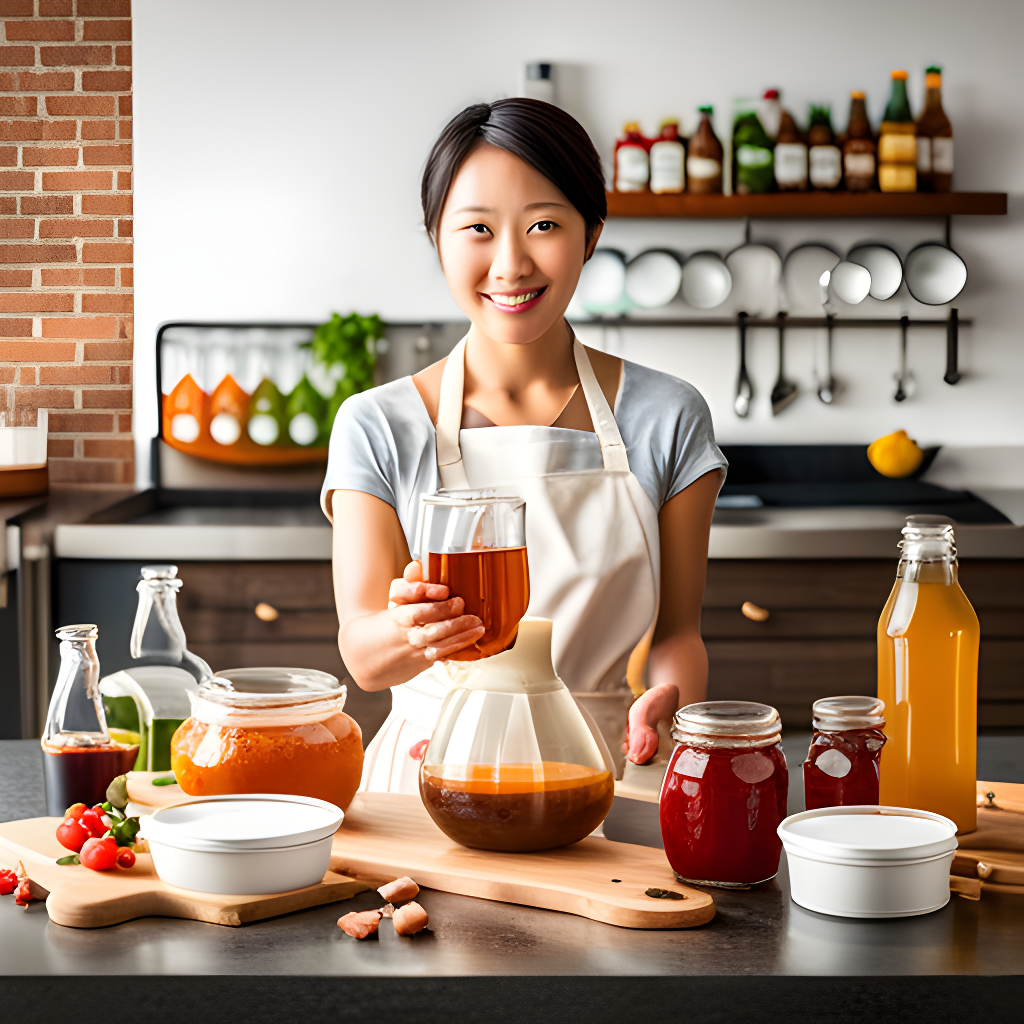Brew Your First Kombucha Batch
Kombucha, with its tangy, fizzy goodness and potential health benefits, has captured the hearts of many. If you’re new to the world of Kombucha and want to experience the joy of brewing your very own batch at home, you’re in for a treat. In this step-by-step guide, we’ll demystify the Kombucha-making process and help you create your first delicious brew.
What You’ll Need
Before we dive into the process, gather the following supplies:
Ingredients:
- 3 ½ quarts (14 cups) of filtered water
- 1 cup of granulated sugar
- 4-5 bags of black or green tea (or 2 tablespoons loose tea)
- 2 cups of mature Kombucha (store-bought or from a previous batch)
- 1 SCOBY (Symbiotic Culture of Bacteria and Yeast)
Equipment:
- A large pot for boiling water
- Glass or ceramic brewing vessel (at least 1-gallon capacity)
- Clean cloth or paper towel
- Rubber band
- A glass bottle or jar for storing finished Kombucha
Step 1: Prepare Your Workspace
Start by ensuring your hands and all equipment are clean. Kombucha is a living culture, and cleanliness is crucial to a successful brew. Wash your hands thoroughly, and make sure all utensils and containers are well-sanitized.
Step 2: Boil the Water
In a large pot, bring 3 ½ quarts (14 cups) of filtered water to a boil. Once it’s boiling, remove it from heat and add the sugar. Stir until the sugar is completely dissolved. This sweetened water will be the base for your Kombucha.
Step 3: Steep the Tea
Add the tea bags or loose tea to the sweetened water. Let it steep for about 10-15 minutes, or until the tea has cooled to room temperature. Removing the tea bags or straining loose tea is optional.
Step 4: Transfer to the Brewing Vessel
Pour the sweet tea into your clean glass or ceramic brewing vessel. Leave some room at the top for the SCOBY and some extra space for expansion. You should have about ¾ of the container filled with the sweet tea.
Step 5: Add the SCOBY
Gently place the SCOBY on the surface of the sweet tea. It may float or sink – both are okay. If it sinks, a new SCOBY will often form on top.
Step 6: Add Starter Liquid
Pour in 2 cups of mature Kombucha from a previous batch or store-bought Kombucha. This helps lower the pH of the mixture, creating an environment conducive to fermentation.
Step 7: Cover and Wait
Cover the top of the brewing vessel with a clean cloth or a paper towel and secure it with a rubber band. This allows air to flow in while keeping contaminants out. Place the vessel in a warm, dark spot (ideally 75-85°F or 24-30°C) to ferment. The fermentation process can take anywhere from 7 to 14 days, depending on your desired taste.
Step 8: Taste Test
After 7 days, begin tasting your Kombucha. Once it reaches the flavor you like, it’s time to move on to the next step. If you’re unsure, let it ferment a bit longer for a more tangy taste.
Step 9: Bottle Your Kombucha
Carefully remove the SCOBY and reserve 2 cups of your Kombucha as starter liquid for your next batch. Pour the remaining Kombucha into clean glass bottles or jars, leaving some space at the top. This is when you can add flavors like fruit or herbs if desired.
Step 10: Second Fermentation
Seal the bottles and let them sit at room temperature for 1-5 days for a second fermentation. This adds carbonation to your Kombucha. Keep an eye on the pressure in the bottles to avoid excessive fizz.
Step 11: Enjoy Your Homemade Kombucha
Once the second fermentation is complete, refrigerate your bottles to slow down the fermentation process. Your Kombucha is now ready to be enjoyed! Pour it into a glass, add ice or your favorite garnishes, and savor the fruits of your labor.
Congratulations, you’ve successfully brewed your first batch of Kombucha! As you gain experience, you can experiment with different tea types and flavor combinations to create your signature Kombucha brew. Happy brewing!
